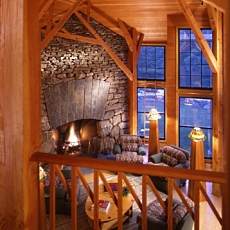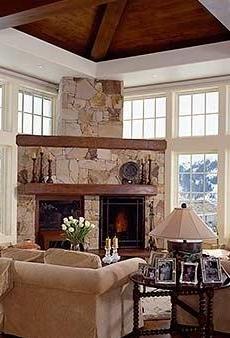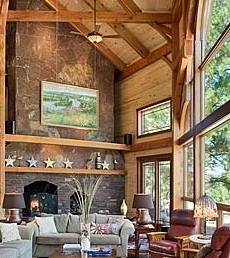A corner wood fireplace optimizes room layout while creating a cozy focal point. These space-saving designs tuck neatly into underutilized corners, freeing up wall space for furniture or decor. The angular configuration naturally draws people together, fostering intimate conversations around the fire. Corner installations work particularly well in open-concept homes, where they help define distinct living areas without obstructing sightlines. The triangular footprint allows for creative surround designs that enhance the room’s architecture. Whether rustic or modern, a corner wood fireplace becomes a natural gathering spot that radiates warmth in multiple directions.
Material choices dramatically influence the fireplace’s character. Stacked stone creates a rugged, organic look that complements cabin aesthetics. Smooth concrete offers contemporary appeal with clean lines. Reclaimed brick adds vintage charm, especially when arranged in herringbone patterns. For a lighter feel, whitewashed wood paneling surrounds the firebox. Mixed material combinations—like stone veneer with wood mantels—add visual interest. Each option impacts the fireplace’s heat retention and maintenance requirements alongside its appearance.
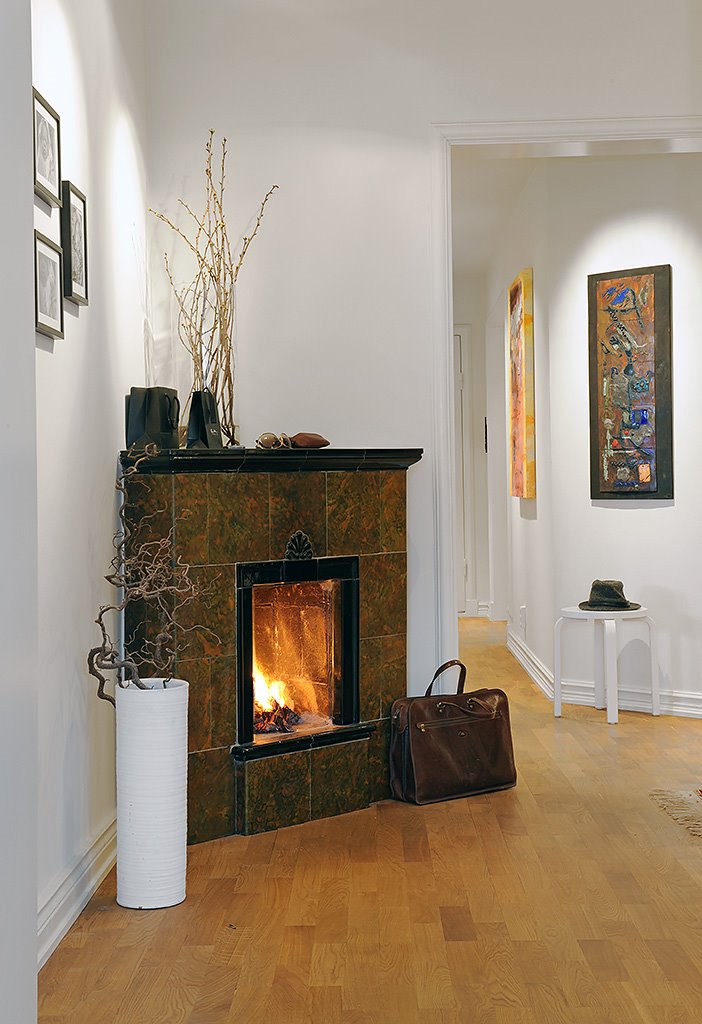
Design variations cater to different functional needs. Open hearth designs maximize fire visibility but require more clearance space. Enclosed models with glass doors improve efficiency and safety. Some corner units incorporate built-in wood storage on one side for practicality. Double-sided designs create a see-through effect between adjoining rooms. Rustic versions might feature a simple metal firebox with minimal surround, while elaborate designs could include floor-to-ceiling stonework. The right configuration depends on heating needs, aesthetic preferences, and room dimensions.
Structural considerations ensure safe, efficient operation. Proper flue placement is crucial in corner installations—angled chimney systems may be required. Non-combustible materials must surround the firebox according to local building codes. The hearth should extend sufficiently beyond the fireplace opening. Professional installation guarantees correct clearances from walls and ceilings. These technical elements prevent fire hazards while optimizing heat distribution throughout the room.

Decorating around a corner fireplace presents unique opportunities. Angle furniture toward the fire to create natural conversation areas. Floating shelves on adjacent walls balance the fireplace’s visual weight. Mirrors strategically placed opposite windows reflect both light and fire glow. The corner location allows for asymmetrical decor arrangements that feel intentional rather than haphazard. These styling choices enhance the fireplace’s presence while maintaining functional traffic flow.
Mantel designs for corner fireplaces range from minimalist to ornate. A single reclaimed wood beam mounted diagonally emphasizes the angularity. Matching stone ledges on both walls create symmetry. Floating concrete shelves offer modern simplicity. Some designs forgo traditional mantels entirely for a streamlined look. The mantel’s proportions should complement the fireplace’s scale—larger surrounds need more substantial shelving. These crowning elements provide display space while completing the fireplace’s architectural statement.
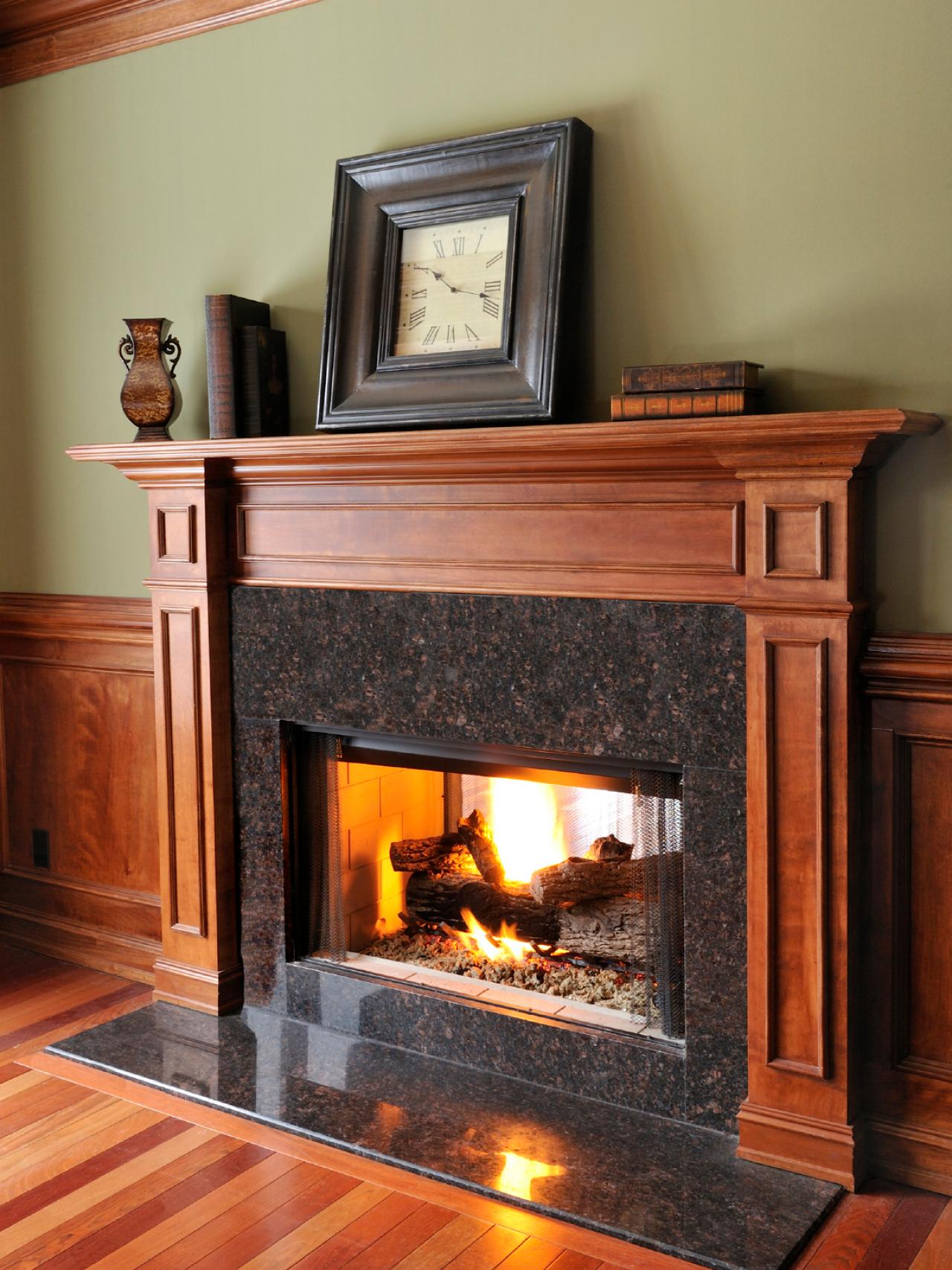
Seasonal adaptations keep the corner fireplace relevant year-round. Summer months allow for decorative displays of candles, plants, or artwork in the firebox. Autumn arrangements might include stacked birch logs and seasonal gourds. Winter transforms it into a functional heat source and holiday focal point. Spring decorations could feature fresh greenery and floral accents. This versatility ensures the fireplace remains an engaging element regardless of outside temperatures.
Lighting enhances the corner fireplace’s ambiance. Directional spotlights highlight textured stonework after dark. Wall sconces on adjacent walls provide balanced illumination. LED strip lighting under mantels creates a soft glow. The corner position naturally casts dynamic shadows that add depth to the room. These lighting layers make the fireplace a captivating feature both day and night.

Maintenance preserves the fireplace’s beauty and functionality. Regular chimney sweeping prevents creosote buildup in wood-burning models. Brick or stone surrounds may need occasional resealing. Metal components require polishing to prevent corrosion. Ash removal and glass cleaning maintain the firebox’s appearance. These care routines ensure the fireplace remains a safe, attractive centerpiece for years.
The psychological benefits of corner fireplaces contribute to their appeal. The sheltered position creates a sense of security and intimacy. The radiating warmth fosters relaxation and connection. The flickering flames provide mesmerizing focal points that reduce stress. These qualities explain why corner fireplaces often become the most cherished spots in homes—places where people naturally congregate and unwind. Their combination of practical space-saving design and emotional resonance makes them enduringly popular.
wood burning stove brick surround ideas Wood burning stove, Wood burning

Stacked stone fireplace ideas for your home 6 Inspira Spaces Stacked stone fireplaces

Home furniture: corner fireplace designs

Best Fireplace Mantel Designs – Interior Surround Ideas

More Standout Corner Fireplace Designs . . . Bricks & Stones!
Pin on BBM: Our Projects- Fireplaces

Ravishing Living Room Designs With Corner Fireplace
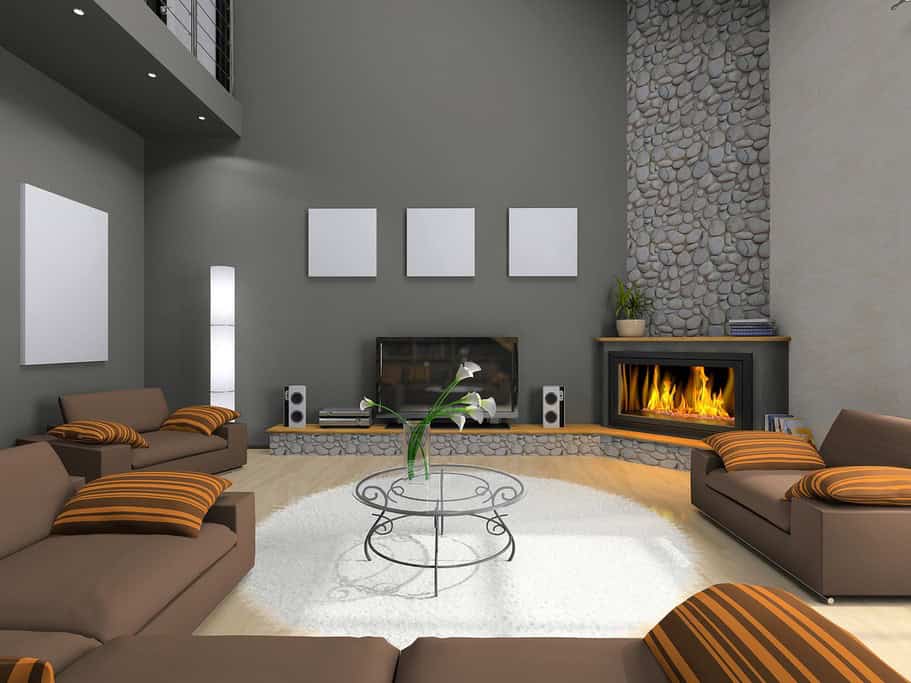
Stone Corner Fireplace Designs . . . Vastly Versatile!
Standout Corner Fireplace Pictures . . . Stone Style!
Related Posts:
